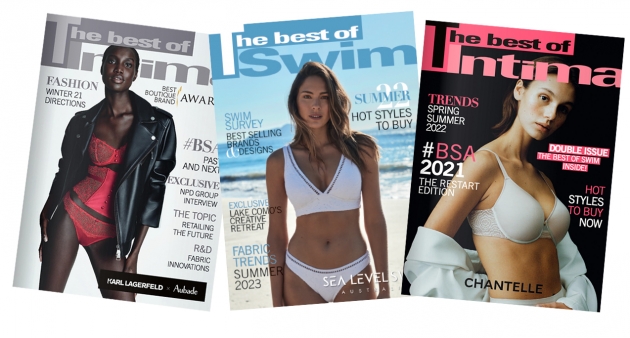
The Best ofIntima & Swim Edit
Whether exploring untamed landscapes, setting sail on a dream cruise, or wandering the streets of a bustling city, the right wardrobe enhances the experience. Join us on a journey through time as we trace the evolution of travel wear, a category that has grown into a thriving market.

From the wool coat of medieval explorers to the seamless technical bra worn by an influencer stopping over in Tokyo, travel clothes have always reflected their era. More than just a trend, "travelwear" has become a distinct category in the fashion industry, at the crossroads of comfort, functionality, style, and identity. This segment, which is exploding today due to experiential tourism, luxury cruises, and hybrid mobility, has its roots in centuries of clothing evolution.
Protective Clothing
In its early days, travel was far from being a leisurely activity. As early as the Middle Ages, merchants, pilgrims, and couriers traveled long distances on foot, horseback, or in carts. Their clothing was designed to endure: thick wool tunics, coarse linen shirts, and laced leggings. They also wore braies, a type of long underwear tied at the waist, typically made of linen. The protective layer, the cloak or coat, was lined and waterproofed with wax or oil. Travel was harsh, and clothing served as armor against the elements.

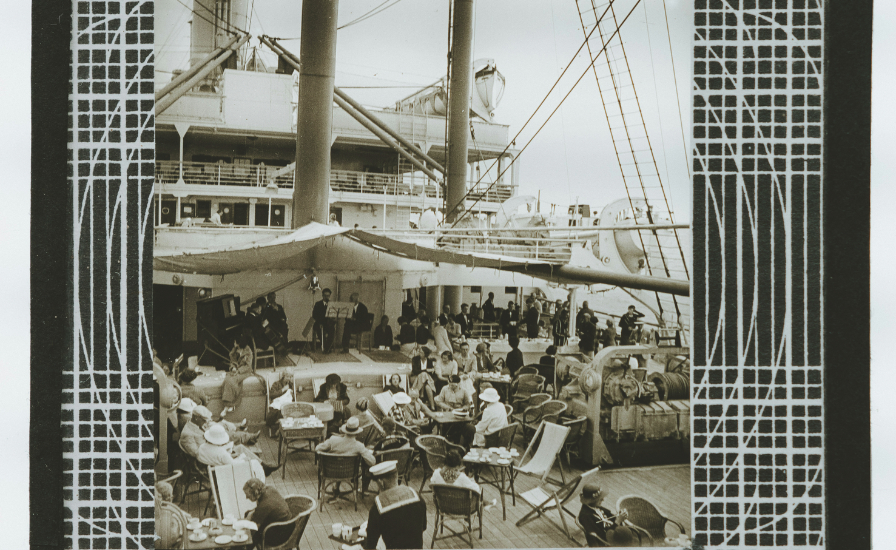
19th century
Etiquette and Sophistication
In the 19th century, with the advent of railroads and ocean liners, travel became more accessible and more codified. In Victorian England, etiquette books dictated specific outfits for journeys: modest dresses, fitted coats, gloves, and pinned hats. Women's undergarments remained restrictive: whalebone corsets, cotton buttoned combinations, and layered petticoats. On transatlantic ocean liners like the Lusitania, Queen Mary, or Titanic, passengers changed clothes for every occasion: a walk on deck, tea, dinner. It was also in 1937 that a young Louis Vuitton, then just 16 years old, founded his waterproof canvas luggage company.
In the United States, the first guides dedicated to women traveling offered practical advice and style codes. In 1870, in New York, The Art of Dressing Well: A Complete Guide to Economy, Style, and Propriety provided detailed — and sometimes amusing to today's reader — advice on how to pack, style one's hair and dress while traveling. "A lady's attire is rarely judged as much as when she travels, and there is no surer indicator of her good taste than her travel clothes," it said. The guide also suggested, "Simple linen cuffs and collar, fastened with a discreet brooch, leather boots, and sturdy gloves are of the best taste. The hat, more practical than a coiffure, should be made of straw in summer, felt in winter, and modestly adorned." Additionally, "When a journey is to be particularly long, especially in winter, it is far wiser to choose stockings, canvas corsets, and colored petticoats, which will prove infinitely more practical than white ones, especially if no stop for laundry is planned.”
In the late 19th and early 20th centuries, automobiles began to appear, used primarily by the wealthy for leisure activities and short journeys. While distances remained modest, these excursions already had their own style and dress code. Since the vehicles were open-air, drivers and passengers wore gloves, hats, long linen coats, and protective goggles. Women added veils to their hats to protect themselves from the sun, wind, and dust. The favored destinations at the time were European spa towns like Baden-Baden or Bath, as well as Mediterranean cruises to Egypt and Italy.
Luggage: Wooden or leather trunks, hat boxes.
The global travelwear market is expected to reach $17.5 billion by 2030." Allied Market Research

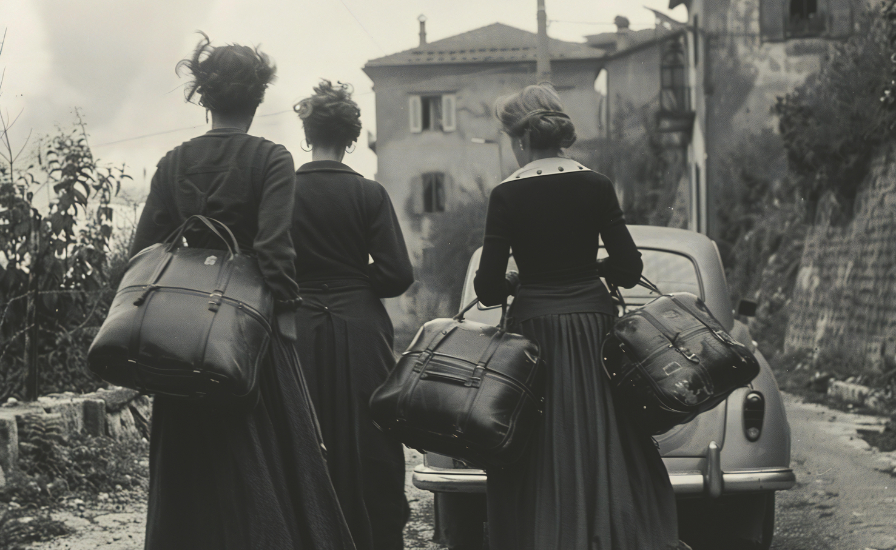
1920s
Functional Elegance
The true style revolution arrived in the 1920s, with Gabrielle Chanel and her Little Black Dress, Elsa Schiaparelli, Jeanne Lanvin, Madeleine Vionnet... The "boyish" look took over with its sleek silhouettes, iconic bob haircut, and pants! Women discovered outdoor sports, and mixed sportswear began to appear — though still quite formal by today's standards. At the same time, another revolution was taking place in textiles: the advent of synthetic fibers. Rayon, viscose, and nylon became popular in the 1930s, as industrialists quickly realized their usefulness in a lifestyle focused on "movement." Another major advancement was the introduction of snap buttons and the zipper, which replaced laces and buttons, simplifying dressing and opening the door to new creative possibilities. Women swapped corsets for soft cotton bras, adopted shirt dresses, and sets made from crepe de chine. Men, in turn, lightened their wardrobes with linen suits and open-collared shirts. The beach pajama, imported from the East, became a fashion piece. The materials became more breathable: washed linen, crinkled silk, and jersey. Chic now lay in fluidity.
Luggage: Hard suitcases, compartment trunks.

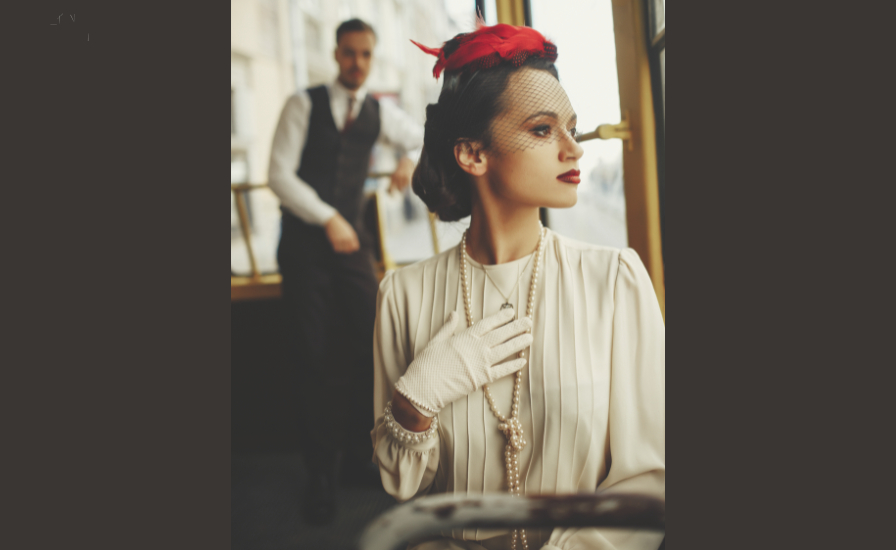
1950s - 1960s
The Jet Set Style
In the 1950s, air travel was a privilege, and it showed: passengers dressed with precise elegance. Women wore cinched dresses, pastel suits, patent leather heels, and white gloves; men wore dark suits, felt hats, and matching luggage. The look was flawless, even in the pressurized cabins of the first long-haul flights. Lingerie was shaping: corsets, underwire bras, and high-waisted panties. "Travel linen" was already being discussed, with materials that dried quickly and wrinkled little.
The 1960s extended this sophistication but introduced a touch of modernity inspired by the "Jet Age" style: sleeker silhouettes, jersey suits, coordinated sets for women, soft shoes, and lighter luggage. With the rise of seaside tourism and cruises for the Jet Society, travel elegance became more modern. Paris, New York, the French Riviera, and Biarritz were among the trendiest destinations.
Luggage: Assorted suitcases, vanity cases, and rigid bags.
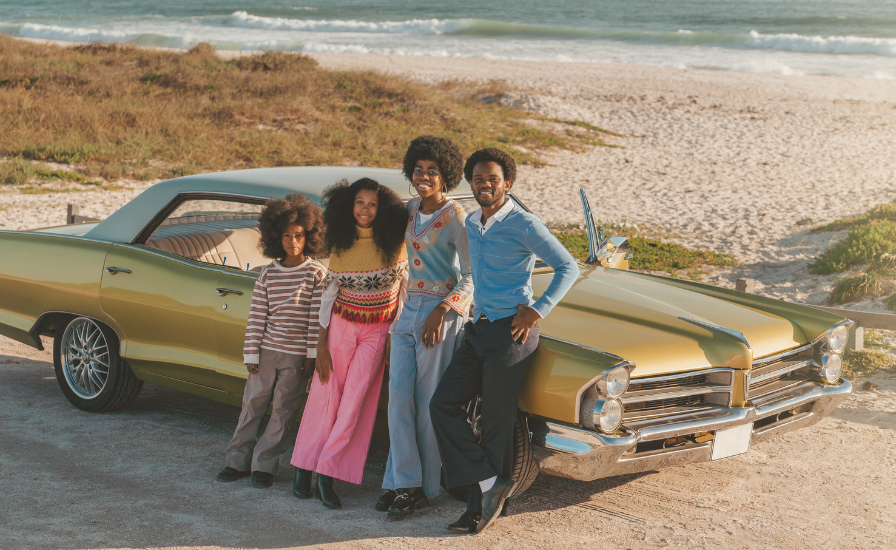
1970s
Relaxation and Freedom
In the 1970s, casual style took over, with bell-bottom pants, bohemian tunics, embroidered cotton shirts, and colorful kimonos becoming staples in airports and train stations. Travel became an experience, no longer something to show off. Resortwear emerged subtly, featuring caftans, printed dresses, lightweight cotton sets, leather gladiator sandals and artisanal accessories, perfect for beach getaways and cruises. Swimsuits, inspired by the hippie chic style, embraced psychedelic patterns, crochet, and looser cuts. This was also the decade of bodily emancipation: the "no bra" movement gained ground, with bras being replaced by fluid blouses or tops without support, symbols of a new freedom of expression. Topless became trendy on European beaches, especially in France, Spain, and Italy, disrupting beachwear codes and sparking a more natural, sensual, and liberated aesthetic. Travel, freed from formal constraints, became a hedonistic experience, with individuals expressing their ideals of freedom through their way of dressing. Sunny destinations like Ibiza, Saint-Tropez, and Bali became new hubs of bohemian style, where sarongs, braided leather sandals, oversized sunglasses, and macramé bags were the standard gear for the stylish traveler. Underwear became freer: wire-free bras, high-cut panties.
Luggage: Canvas bags, crossbody bags, sports bags.
1980s
The Generation Stretch
After the fluidity of the seventies, the 1980s took a decisive turn toward performance and comfort. Lycra, the elastic filament of the future, began to infiltrate every corner of the wardrobe, bringing new freedom of movement to daily life. For the first time, it wasn't the body that conformed to the garment, but the garment that adapted to the body. Comfort and flexibility became the decade's defining luxuries. In lingerie, stretch fabrics embraced the body's curves, allowing subtle tension and release with every movement. Grace Jones embodied this sensual elasticity; her metallic stretch thong and high-cut silhouettes on the beach became emblems of bold self-expression. The decade's cult essentials emerged from this new dynamic: long johns, ancestors of today's leggings, proved endlessly adaptable and multifunctional. The branded cotton sweatshirt, softer and more relaxed than the pullover, became a symbol of youth mobility and casual sophistication, perfect for travel or everyday wear. The spirit of movement extended beyond clothing: the Walkman revolutionized personal soundtracks, the K-Way redefined lightweight practicality, and the first down jackets appeared, indispensable for winter adventures even if not yet packable.
Luggage : Double bags, fanny packs, oversized carryalls—everything designed for a life in motion.
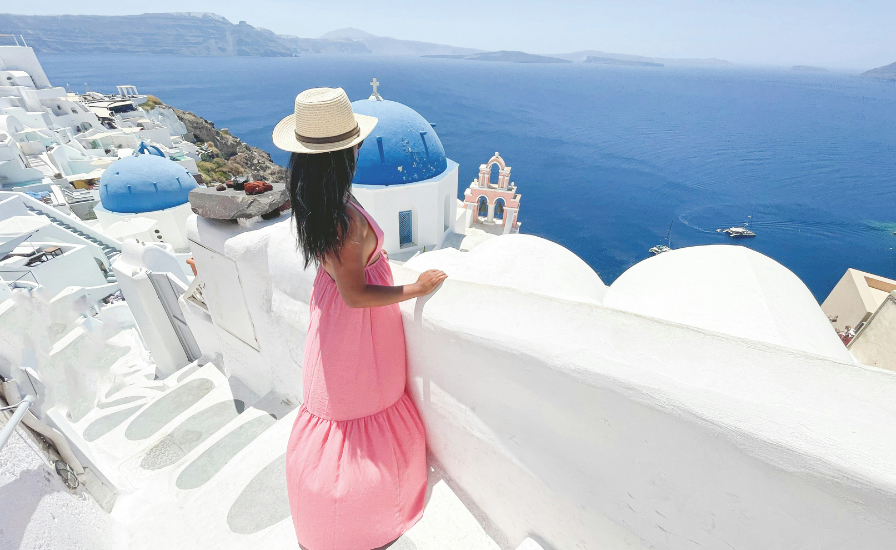
1990s - 2000s
Chic Comfort
In the 1990s, sportswear began to make its way into everyday wardrobes. Velvet tracksuits, sneakers worn off the courts, and the first urban leggings slowly became part of the fashion scene, driven by brands like Nike, Fila, and Reebok. In the 2000s, celebrities like Paris Hilton and Beyoncé popularized glamorous sweatpants, notably those of Juicy Couture. But it was in the early 2010s that the trend truly exploded: brands like Lululemon and Adidas by Stella McCartney elevated the style into a true lifestyle. Athleisure became the uniform of a mobile, active, and connected generation, seeking pieces that were both functional and stylish. This hybrid silhouette, perfect for travel, blended performance and relaxation without ever sacrificing style.
Luggage: Rolling bags, nylon luggage and lightweight hard-shell suitcases.
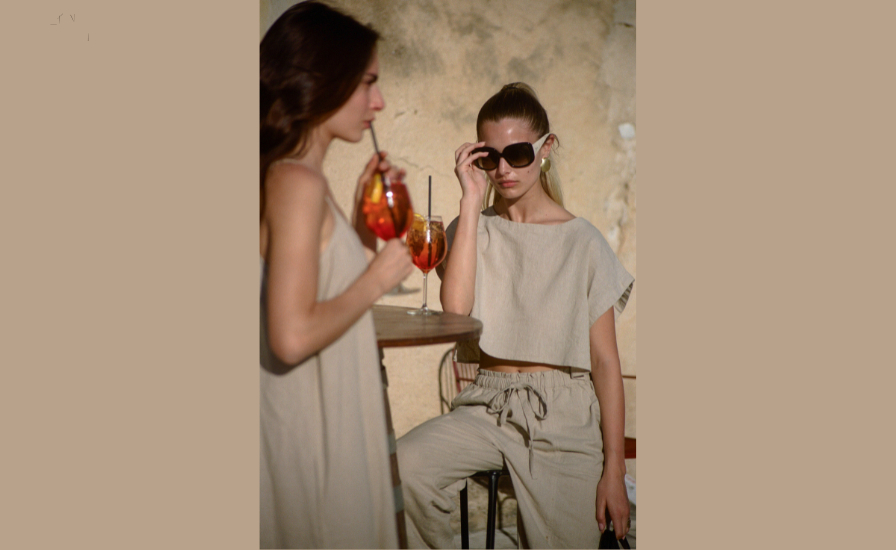
2020 - Present
Versatility and Durability
Since 2020, hybridization has dominated. Today's travelwear blends style and functionality. Innovative textiles, multifunctional clothing, and smart accessories have profoundly transformed the way we dress. From wrinkle-free fabrics to thermoregulating materials, the modern traveler's wardrobe is designed to keep up with the pace of contemporary globetrotters
Luggage: Modular luggage, lightweight suitcases, optimized cabin-sized formats.

Key Terms in the Nomadic Wardrobe
Packing often involves a delicate balance between style, comfort, and practicality. The key is to focus on versatile, lightweight pieces designed to move — without compromising style. A well-thought-out travel wardrobe combines measured elegance with freedom of movement.
Smart Fabrics
The choice of materials is essential: breathable fabrics that wick moisture and dry quickly, lightweight to minimize bulk, wrinkle-resistant to stay impeccable without ironing. In general, technical textiles made from synthetic fibers like polyester or polyamide offer remarkable durability without sacrificing comfort. This is the case with Sensitive Fabrics by Eurojersey , known for their performance and adopted in travelwear capsules, particularly by lingerie and swimwear brands.Another key player, Italian specialist Brugnoli , is expanding its lifestyle range with fabrics suited to contemporary wear , from wrinkle-free shirts to "Life-Proof" pants, including innovations like technical cotton blended with Lycra Adaptiv and its circular-knit denim "JeansAttitude." Technical wool, especially merino wool for its thermoregulating and odor-resistant properties, is also central to Eurojersey collaborations, with projects like Travel Wooling or Techblend , combining performance and urban elegance.For resortwear and especially swimwear, synthetic fabrics remain favored for their ability to enhance colors and prints while offering fluidity and resistance to wrinkles. Manufacturers like Borgini Jersey and Maglificio Ripa offer ideal bases, with the latter's best-seller Light Bloom — originally designed for lingerie and swimwear — now available in dresses, pants, and polos.Developments inspired by activewear set the tone: breathability, moisture management, support, and color retention are at the heart of the latest innovations. Manufacturers like Penn offer textiles with differentiated compression zones, perfect for a hybrid and high-performance wardrobe. Even terrycloth fabrics are making a comeback, such as the Venice model from Boselli , perfect for going from pool deck to spa, now available in recycled yarns and trendy colors.Natural fibers like linen and silk continue to appeal in warm climates, though their tendency to wrinkle encourages blends, like those from Tessitura Taiana , which develops silk-viscose, silk-linen, and silk-cotton solutions with a fluid drape and sophisticated stripes.Finally, for those looking for a touch of sensuality, lace and macramé inspired by chic beachwear are still in high demand. Brands like Iluna Group , Tessitura Colombo , Chanty, and Dresdner Spitzner have the ability to turn them into true textile objects of desire.
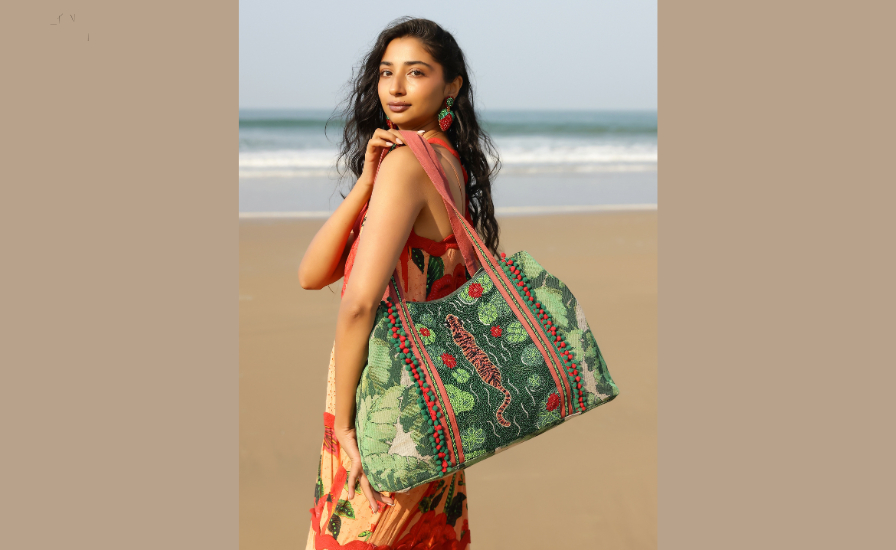
Layering
To cope with climate changes and unpredictable weather conditions, layering remains an essential strategy. An ultralight and compressible down jacket or a technical windbreaker easily fits into a bag and offers valuable thermal protection. A fine cardigan or an organic cotton hoodie in a neutral shade complements a shirt dress or a bodysuit perfectly for a seamless transition from the beach to the city, and even into the evening. In a more technical approach, some brands now incorporate RFID protection fabrics in travel jackets or scarves, enhancing security against electronic theft risks.
On the innovation front, “climate-adaptive” garments, which automatically adjust to temperature changes, are becoming essential allies in next-generation resortwear collections. Layering also applies to undergarments: seamless bras, invisible shaping bodysuits under flowy dresses, or thermoregulating panties provide comfort and support without compromising on style, along with swimwear and menstrual underwear, which are a true game-changer for contemporary globetrotters. Pairing a light caftan with technical lingerie or layering a linen shirt over a structured one-piece swimsuit allows for the creation of versatile and sophisticated silhouettes. This approach is key to attracting the on-the-go consumer.
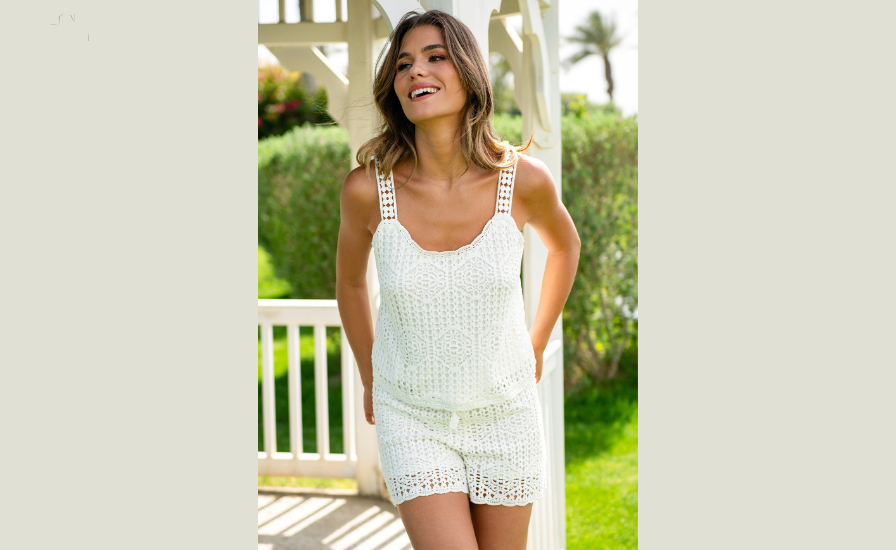
Versatility
Each item packed in your suitcase should serve more than one purpose. A classic stretch fabric blazer can elevate a casual outfit while providing optimal comfort. Convertible pants that transform into shorts with a simple zip are ideal for outdoor adventures. A well-tailored pair of joggers can work just as well for a day of sightseeing as for a casual dinner. And what about those beautiful satin cotton tunic-pant loungewear sets or those gorgeous printed kimono jackets, perfect to wear straight from bed or in the evening!
Not to mention the light linen tunics, worn fluidly with flip-flops or accessorized with a belt, necklace, and sandals, allowing for a seamless transition from lounging by the pool to dining on a terrace without a misstep… Multi-purpose dresses and flowing jumpsuits are gaining popularity: easy to layer, they offer a polished yet relaxed silhouette in any situation. Many brands also offer reversible pieces: double-faced jackets, two-in-one swimsuits, perfect for changing up your look without overpacking.
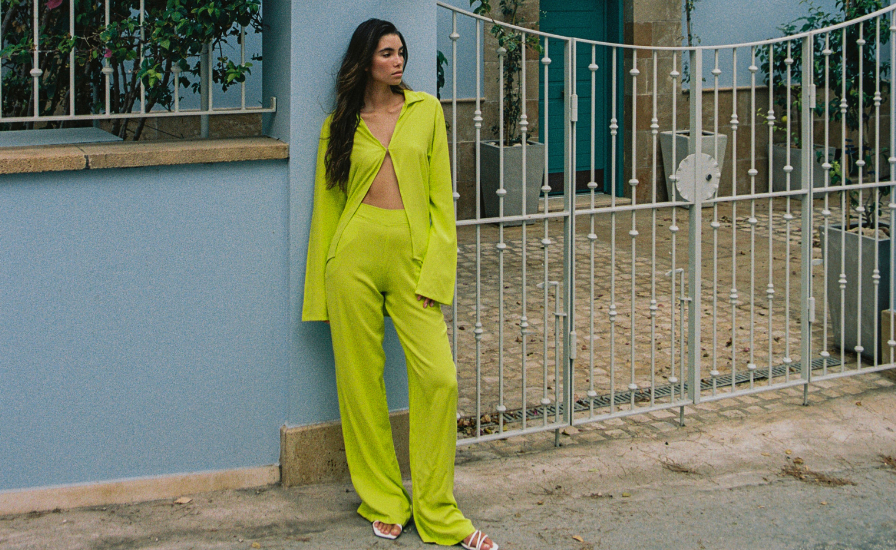
Eco-responsibility
Eco-responsibility has become a major driving force in the travelwear industry. According to a study by GlobalData, more than 60% of travelers consider the eco-friendly aspects of materials when purchasing travel clothing. Many brands are responding by incorporating fabrics made from recycled, biodegradable, or renewable materials into their collections.
In the world of swimwear, traditionally dominated by synthetic fibres, the shift is accelerating, particularly with the arrival of new technical fiber qualities such as the Eco-Made range from The Lycra Company. Resortwear is also embracing natural materials like hemp, organic cotton, and linen, which are seeing a true resurgence. Finally, artificial fibers such as Tencel , Modal , and bamboo are appealing for their softness, lightness, and natural antimicrobial properties, becoming key components in luxury travel-focused collections.

"70% of travelers seek wrinkle-free textiles that wick away moisture" McKinsey & Company
The Cruise Boom
Once reserved for the elite, cruises are experiencing a true resurgence following the halt imposed by the pandemic — great news for the travelwear and resortwear segments! According to the Cruise Lines International Association (CLIA), the industry is expected to surpass pre-crisis attendance levels by 2025, potentially reaching 36 million passengers. In terms of revenue, the global cruise market is projected to grow by 9.29%, with an estimated value of $35.87 billion by 2027. The United States is expected to remain the leader, with an estimated revenue of $18.36 billion.
Another key development is the changing profile of cruise passengers. While Baby Boomers historically dominated the market, Millennials and Generation Z now represent 36% of travelers. This shift is driven by an increased spending capacity and a rethought offering that better suits their preferences. According to CLIA, 73% of Millennials and Generation X travelers are positively considering cruise vacations. The segment is also attracting a growing number of first-time cruisers: Carnival Cruise Line has announced a 30% increase in "first-timer" bookings for 2025 compared to the previous year. This resurgence broadens the opportunities for brands positioned in the luxury beachwear and travelwear markets.
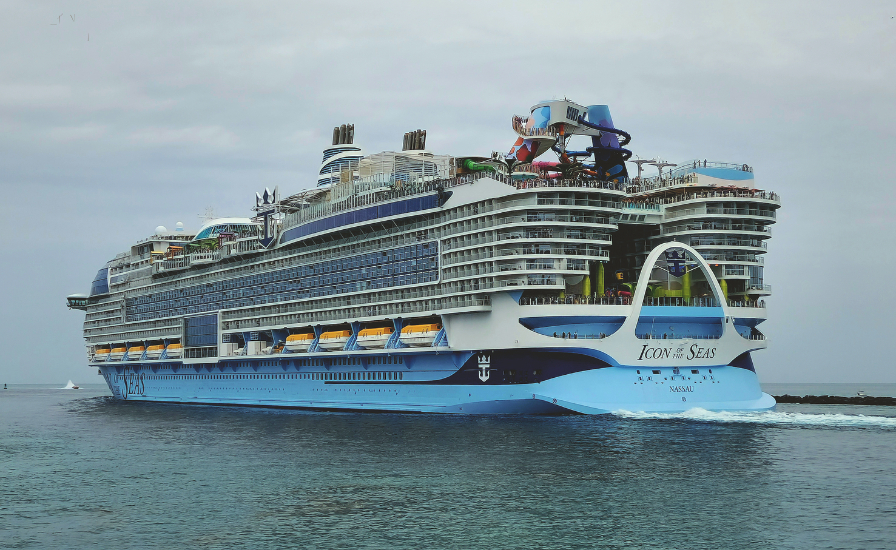
Big is Beautiful
Driven by a very positive momentum, cruise lines are thoroughly rethinking their offerings to appeal to an ever-expanding customer base. A prime example of this is the Icon of the Seas by Royal Caribbean, the largest cruise ship ever built to date, boasting a gross tonnage of 248,336 tons, a length of nearly 365 meters, and a passenger capacity of 7,600. Meanwhile, Norwegian Cruise Line placed the largest order in its history in April 2024, with eight new ships planned between 2026 and 2036 to meet growing demand.
The investment goes beyond the ships: land-based experiences are also expanding. Royal Caribbean developed Perfect Day at CocoCay , a private island in the Bahamas reserved for its passengers, combining sports activities, premium relaxation, and high-end services. Carnival Cruise Line is also set to launch a new exclusive destination on Grand Bahama in 2025: Celebration Key , a beach concept divided into five themed zones, each offering specific amenities.

Cruise Style
The modern cruiser must create a hybrid wardrobe, combining casual resortwear , comfortable outfits for shore excursions, and dressier looks for onboard dinners. The essentials of cruise travelwear? Lightweight, airy dresses, UV-protective swimsuits , and breathable linen shirts —all designed to adapt to the rhythms and demands of a sea journey. An increasing number of technical pieces now feature sun protection properties (UPF 50+ ), quick-drying fabrics, or anti-chafing benefits, perfect for long days on deck or tropical excursions. The limited space in cabins requires clothes that are compressible , wrinkle-resistant , and easy to transition from day to night. Some brands even offer smartly modular outfits that cover every moment of the trip with style.
A major trend right now is the onboard boutiques that specialize in travel-focused fashion. These stores curate clever, stylish, and versatile collections that meet the growing demand for practical clothing… without compromising on appearance. This positioning is especially beneficial for premium swimwear brands, elegant resortwear , and discreet yet technical lingerie , perfect for wearing under summer dresses.
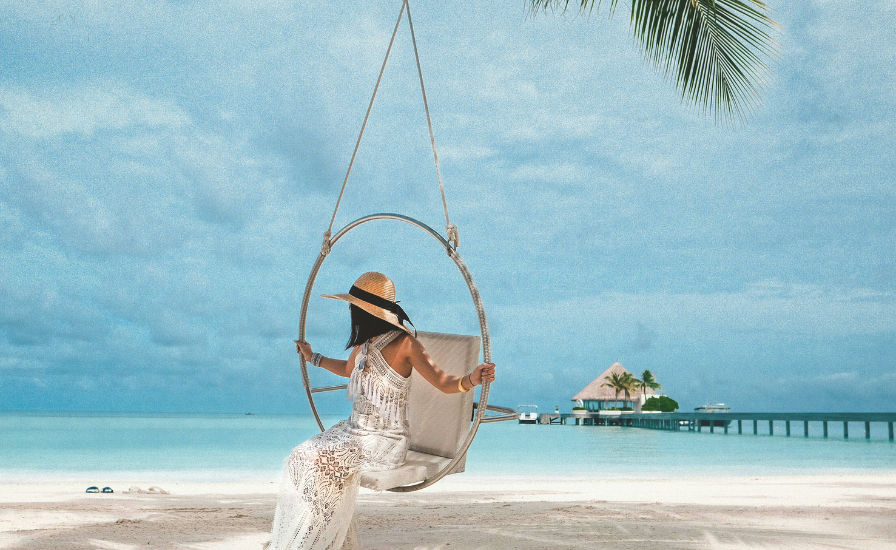
A Diversification Opportunity
Travelwear is no longer just a seasonal niche. Today, it represents a complete vision of clothing: modular, intelligent, aesthetic, and ethical. This dynamic wardrobe responds to the needs of a discerning, mobile consumer who seeks comfort without compromising on style. From cruise cabins to airport runways, from docks to rooftops, travel clothing has become a strategic differentiator for beachwear, lingerie, and ready-to-wear brands. The boom in cruising, the rise of "workations," the influence of exotic destinations on fashion imaginations, as well as advancements in textiles related to performance and sustainability, are shaping a rapidly expanding segment. As the boundaries between categories blur, travelwear is establishing its own codes and making its way into all collections: seaside capsules, resortwear sets, second-skin lingerie, and smart swimsuits.
In Essence
For fashion professionals, this is an invitation to rethink the contemporary wardrobe as a transitional space—between comfort and sophistication, movement and desire, function and storytelling. Because, at its core, travelwear is much more than just a market—it's a space for expression, a stage where the global style of tomorrow is being played out.

Copyright 2025. All right reserved - Terms








